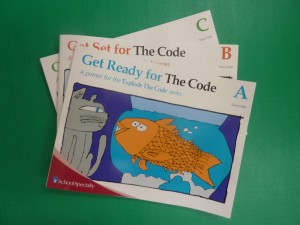Summary: Does your child or teen struggle with organizing his work? Does she have executive functioning issues? Here's the organizational methods that worked best for us in our homeschool. #homeschoolorganization #adhd #homeschoolhighschool
This week was a regular one for us, with my daughter's college midterms being over.
Monday evening I sat down with my newly college student daughter as usual, to hear her college study plans for the week.
This was an outgrowth of our weekly study meetings from our homeschooling years. Then she pulled out this...
She had created her own organizational system for college studies.
It was a simple organizer that she had designed herself.
I don't know if I shared this before, but my daughter used to struggle a lot, with organization, especially in the elementary years.
Workboxing was our go to organizational method in our homeschool. I didn't know that she would adapt it and take it with her to college!
Work boxing can be a real help for kids and anyone who struggles with organization or executive functioning skills.
During the earlier homeschool years we often used work boxing as our organizational method.
Homeschool Organization Methods
During the earlier homeschool years we often used work boxing as our organizational method.
That just involves putting each subject's book, papers, etc in a desk top box, one for each subject.
Later, in the early teen years and in high school, we used spiral notebooks for each subject. That way important papers did not get lost.
SO there was one spiral notebook for math, one for history, etc, etc. All of the math problems were worked out in the math spiral bound notebook.
Later, in the early teen years and in high school, we used spiral notebooks for each subject. That way important papers did not get lost.
SO there was one spiral notebook for math, one for history, etc, etc. All of the math problems were worked out in the math spiral bound notebook.
The for English, all of the written work was done in the English spiral bound notebook, until it was time to write on the computer.
Did that save a lot of headaches!
But it still was a day to day struggle for many years, with papers getting lost, notebooks being misplaced, pens disappearing, and such.
Did that save a lot of headaches!
But it still was a day to day struggle for many years, with papers getting lost, notebooks being misplaced, pens disappearing, and such.
We just kept practicing the organizational skills...
 Here is more about how my teen's college organizational system worked.
Here is more about how my teen's college organizational system worked.
My Teen's Work Boxing Method at College

There was a folder for each course, plus one for printer paper.
She used notebook folders, from the dollar store.
And put them into a clear envelope that she had found around the house.
This made the package thinner, lighter, and easier to carry, than if she had used a notebook.
So everything was at hand, and there was always paper for printing things at college.
When a homeschooler goes to college....they take their organizational skills learned in homeschooling with them!
All the organizing and study planning that we do with our high school kids, and all the efforts we make to teach our kids organizational skills from early on...counts.
A lot of kids from public school may not have these skills in structuring their time, and setting a study schedule, like our homeschoolers do.
How do I know that? My teen noticed that many of her public school college friends struggled with organization in their studies.
Do we give ourselves credit for that?
1) My daughter, on the way to class, on campus, 2) volunteering with a friend from college, 3) lettuse from my neighbor's greenhouse garden, 4) pizza casserole for the church potluck
Do we give ourselves credit for that?
1) My daughter, on the way to class, on campus, 2) volunteering with a friend from college, 3) lettuse from my neighbor's greenhouse garden, 4) pizza casserole for the church potluck
How did we get good communication going with our high schooler?
We did a lot of nature road trips. Sitting together in the car often led to get opportunities for her to share with us.
We have a favorite country road that we like to take, by a local river....
Wishing that my daughter could come with us, but she has lots of studying to do these days...This gave my husband and I an all daylong date...
...and the mountain was out!
Nothing like getting out in nature! As the Native American prayer goes....
Beauty in front of me,
Beauty to the left of me,
Beauty to the right,
Beauty behind me...................
Glorious...How was your week?
Do you use the workboxing approach in your homeschool?
I love reading your comments...
...and the mountain was out!
Nothing like getting out in nature! As the Native American prayer goes....
Beauty in front of me,
Beauty to the left of me,
Beauty to the right,
Beauty behind me...................
Glorious...How was your week?
Do you use the workboxing approach in your homeschool?
I love reading your comments...
And thanks for stopping by BJ's Homeschool,
Betsy
Betsy is mom to her now college grad, whom she homeschooled through high school. She blogs at BJ's Homeschool, about the early years, highschool,
college, gifted/2e and wrote -Homeschooling High School with College in Mind, 2nd Edition, She offers homeschool help through messages at BJ's Consulting, and has had some of her articles picked up by the Huffington Post.
college, gifted/2e and wrote -Homeschooling High School with College in Mind, 2nd Edition, She offers homeschool help through messages at BJ's Consulting, and has had some of her articles picked up by the Huffington Post.
Want to stay in touch?


















